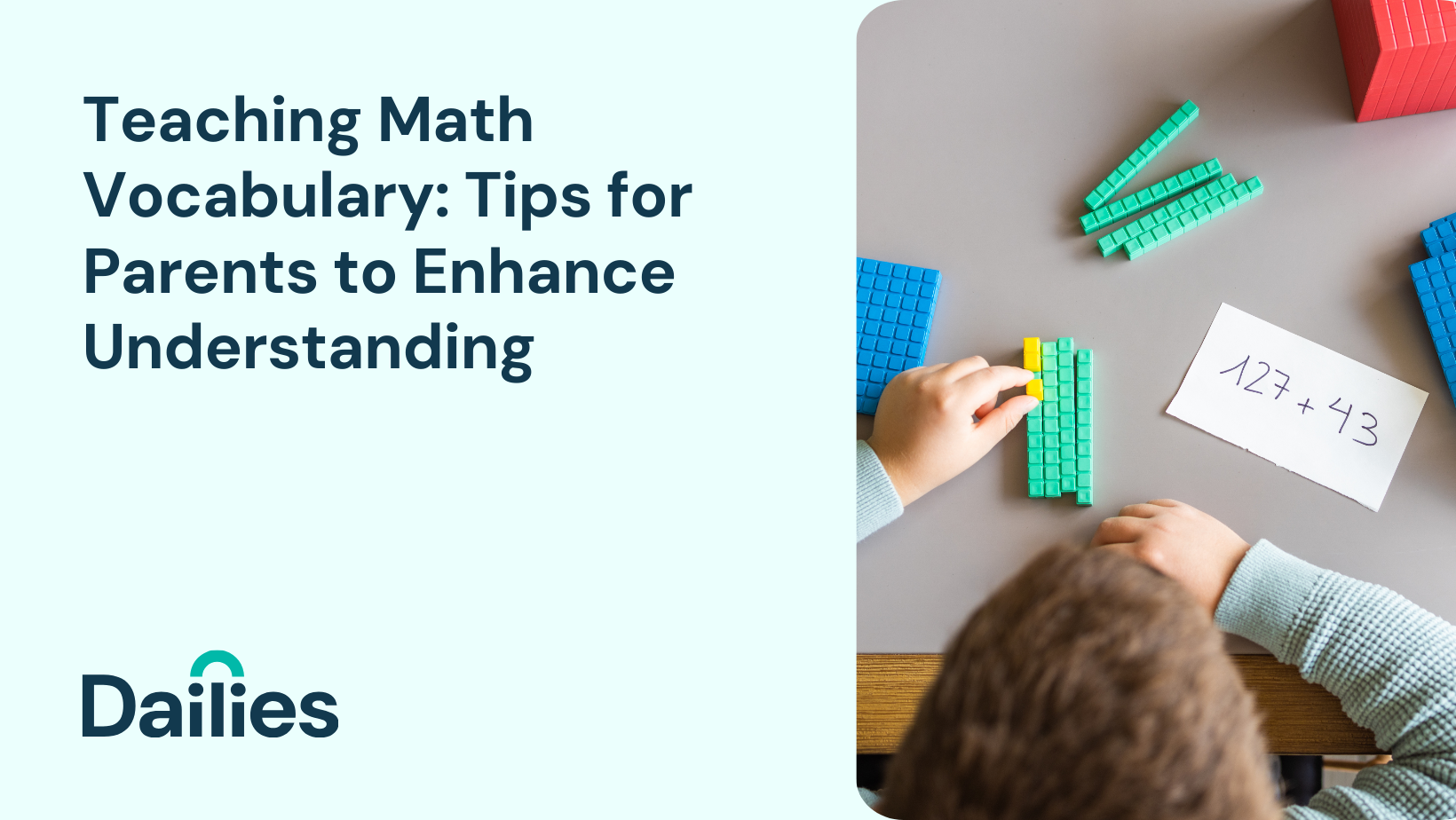Written by
Eleonor Leite-Ah Yo Read all posts by this author
Teaching Math Vocabulary: Tips for Parents to Enhance Understanding
Math vocabulary can be very specialized and as much as we just sort of learn to speak a language from hearing it spoken to us from infancy, no one speaks to us in formal math language from infancy. (Though maybe one should!) That said, we cannot take for granted that students will just learn math vocabulary and how to use it correctly by mere osmosis since we don’t use math vocabulary in daily speak.
As a teacher in the math classroom, it was not uncommon for me to hear, “I know what it is, I just don’t know how to explain it.” in response to me asking what a math vocabulary term means. For example, a student can identify an equation but may not know how to articulate its definition into words. Here is a small handful of tips, in no particular order, for parents to help their child gain more confidence in using and understanding math vocabulary:
- Visual Cues – You can’t go wrong with attaching some kind of visual with math vocabulary. The visual might not even represent the actual definition of the math term but it may help a child recall its meaning by seeing the visual cue that accompanied the vocabulary term. For example, the definition of a ratio might be hard to depict visually but ratios are often associated with cooking so perhaps some measuring cups would be a visual cue for a child, particularly one that likes to cook. Seeing measuring cups can help jog their memory of a ratio as a comparison of two things (in the case of cooking, the measurement of ingredients).
- Analogies – Sometimes we just need someone to provide a more familiar scenario to a foreign math one. When we can compare a complex concept in mathematics to something much more familiar, comfortable and personal, then we can make connections and thus retain the formal math content much easier. A function in Algebra, is often compared to a machine of inputs and outputs. Explore math vocabulary with your child. In order to help them connect vocabulary by way of analogies, parents need to understand the math concept themselves!
- Real World Context – I firmly believe that learning (of any subject) only happens deeply when it is relevant to the learner. In order for something to be relevant, your child needs to know that it is useful in real life. So learning what a ratio or a function is, really won’t stick unless you can help them apply it to something they do in their daily life. The earlier example of ratios in cooking is relevant for anyone that eats. Functions may seem harder to connect to the real world but they actually are not. Most kids play sports. The simple idea that what practice you put into playing your sport results in being the best (fill in your sport) player is the idea behind inputs and outputs in a function. There is a little more nuance to that example since a function is actually defined by an input yielding one and only one output. If you’ve understood that (and don’t worry if that flew right over your head!) then you can probably see how rich of a discussion this can be with your child, even better for a deeper understanding of math vocabulary. On that note, I would encourage you to have those conversations even if you don’t know the answer. Kids always come to school with stories of what was discussed at home and it’s a great discussion starter for the classroom with the rest of the students.
- Games – Just as one might gamify learning vocabulary in an ELA class, math is no different. Try a memory game to match words with definitions or words with pictures. Try making word searches and crossword puzzles. Create flashcards and use them whenever and wherever. Include some incentives to help motivate the actual playing of the vocabulary game.
Write the definitions – One of my favorite math curricula is called Reshaping Mathematics for Understanding. Having taught at a lab school associated with the University of Hawaiʻi at Mānoa, it was incredible to hear students “talk math”. If the students were “lifers”, then they knew no other way to learn mathematics than to explore it through engaging problems facilitated by a teacher who only posed open-ended questions. It was a sight to see that students still embraced a curiosity to learn, to understand why, to take guesses without fear of being incorrect. And through this exploration of math, they came to define very formal math terms in their own words.

